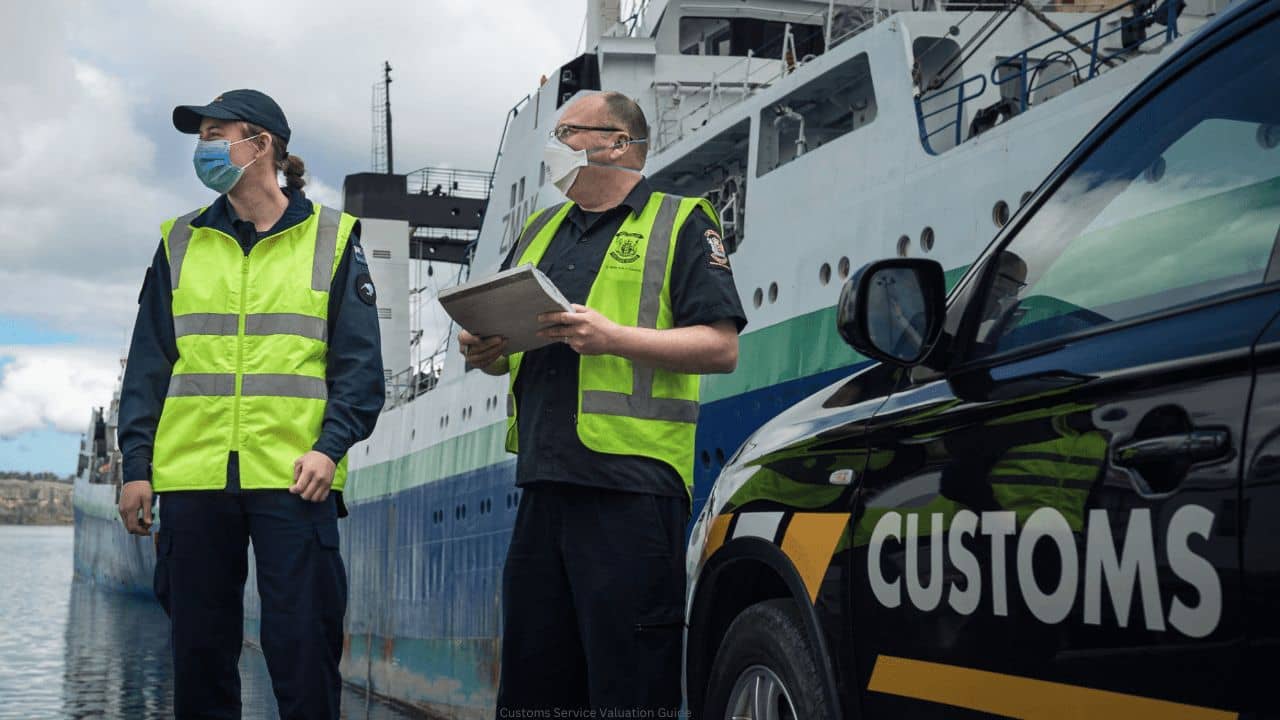
How to Determine the Customs Value for Your Imported Items
5-minute read
When goods are transported across international borders, a tariff duty can be levied on imported goods either as a percentage of the monetary value of the goods (ad valorem), a specific rate of duty (e.g. $1 per litre of alcohol), or a combination of ad valorem plus a specific rate of duty.
Most countries calculate tariff duty on an ad valorem basis (a percentage of the value) as it is more equitable, transparent and easier to estimate.
However, the amount of duty payable depends on the value of the imported goods.
For example, if the value of a good is determined at $1,000, an ad valorem duty of 10% will result in a duty of $100; and if the value of the goods is $1,200, the importer will have to pay $120.
Consequently, importers could be subject to inconsistent Customs duty if the valuation is not consistent.
Therefore it is important that Customs valuation is as simple and predictable as possible to prevent valuation from being used to assess duties on an arbitrary or discriminatory basis.
Customs valuation is used by Customs administrations around the world for importers and exporters to work out the value of their goods and to ensure that goods are levied a fair duty when imported into a country.
Customs valuation is also used by many countries as a tool:
- for compiling trade statistics;
- as a component for calculating Goods and Services Tax (GST) or Value Added Tax (VAT);
- for monitoring quantitative restrictions.

If you are an online shopper, the Customs value is generally what you paid for an item.
If you are importing items into NZ for commercial reasons, for example, to sell or for a business, determining the items’ Customs value can be more complicated.
We look at the methods of determining Customs value below.
The valuation methods
Overall, there are six methods to determine the Customs value of goods. You must use them in strict hierarchical order.
The methods are:
Method 1 – Transaction Value
Method 2 – Transaction value of identical goods
Method 3 – Transaction value of similar goods
Method 4 – Deductive value
Method 5 – Computed value
Method 6 – Residual basis of valuation.
The basic principles in applying the methods of valuation are:
• The primary method of valuation is the Transaction Value Method (Method 1), which is the agreed invoice price of the goods.
• When it is not possible to determine a Customs value under the Transaction Value Method, Customs may (in consultation with the importer) determine the Customs value by proceeding sequentially through methods 2 to 6. The first method that can establish the value, must be used.
Method 1 – transaction value
If your import is the result of a sale for export to NZ, the transaction value is the primary method. You should use this method first, whenever possible.
It includes what you paid (or will pay) for the item, but also includes:
- commissions and brokerage fees, except buying commissions
- packing and container costs and charges
- the value of any items or services you supplied free – or at reduced cost – to the seller to get the product made or sold
- royalties and license fees
- any proceeds from resale, disposal or use that you must then pay to the seller
- the value of any materials, parts, and services used to repair or refurbish the item before importing it
- transportation and shipping costs, including loading/unloading and handling charges, before the item leaves the country, you’re exporting from.
You can deduct the following charges – if you paid them, and they’re clearly separated from the price of your item(s):
- transport and insurance costs, including loading/unloading and handling charges, after the item leaves its country of export
- any (reasonable) costs related to constructing, maintaining or getting technical help with the item when it arrives in NZ
- any (reasonable) costs for transportation or insurance of the item(s) within NZ
- any NZ Customs duties or other NZ taxes.
To use the transaction value method
- you must have evidence of a sale specifically for export to NZ, eg a commercial invoice, contract or purchase orders
- any relationship between the buyer and seller mustn’t have affected the item’s price
- the item’s price or sale mustn’t be subject to any condition or consideration where a value can’t be determined
- there mustn’t be any restrictions in the sale about how the buyer will dispose of or use the item, except for those:
- imposed by law
- that limit where the item can be sold
- that don’t have a substantial effect on the item’s value.
Examples of items where you can’t use the transaction value method
- gifts
- free samples
- anything on consignment
- anything imported by a company branch that isn’t a separate legal entity to the seller
- items that were imported under a hire or leasing contract.

Other valuation methods
If you can’t use the transaction value method, you should use the first possible method of the following five.
Method 2 – transaction value of identical goods
Based on the transaction value of identical items brought into NZ at the same time (or nearly). You must have proof of the identical items’ value.
Method 3 – transaction value of similar goods
Based on the transaction value of similar items brought into NZ at the same time (or nearly). You must have proof of the similar items’ value.
Method 4 – deductive value
This applies if the imported goods are sold in NZ within 90 days of arriving in the country. The resale price of the item in NZ is reduced to the Customs value if the item had initially been sold for export to NZ.
Method 5 – computed value
Based on the production cost of the imported goods, plus an amount for profit and general expenses. This method is generally restricted to cases where you have access to the producer’s factory costs and profit margins.
You must get NZ Customs approval first if you want to use this method.
Method 6 – residual basis of valuation
If you can’t use any of the methods above, you can interpret – within reason – one of them to get the Customs value of an item.
Depending on the items, how they’re imported and the documents you have, you might be able to determine their Customs value based on:
- the valid list price of the items (“list price” is what the seller in the country of export would charge a buyer in NZ)
- a valuation from an independent assessor.
The insurance value of an item isn’t acceptable for determining residual value.

Methods you can’t use
You can’t determine a Customs value by choosing:
- the selling price of items made in NZ
- a system which looks for the higher of two alternative values
- the item’s price on the domestic market, in the country you exported from
- the item’s production cost(s), other than using production values already worked out for identical or similar items
- the sale price of the item to a country other than NZ
- minimum Customs values
- arbitrary or made-up values.
Exchange rates
The Customs value must be in New Zealand dollars. If you bought your item in a different currency, NZ Customs will convert the amount to NZ dollars on the day when the import entry or clearance is lodged with Customs.
Exchange rates are published on the NZ Customs website.
Records
NZ Customs carry out audits to make sure importers are declaring the correct Customs value and may penalise or fine importers if they:
- make a false or incorrect entry or declaration – administrative penalties are charged for errors or omissions in an entry
- don’t keep relevant records for at least seven years.
The above information is intended as general guidance only.
Regulations can change without notice, and for information on the valuation methods, rules and principles that must be complied with to determine the Customs value of goods imported into NZ and common valuation situations and how to deal with them, you can visit the NZ Customs website.
Source: New Zealand Customs Service
P.S. Easy Freight Ltd helps New Zealand importers & exporters to save money on international freight and reduce mistakes by guiding how to comply with Customs and biosecurity rules.
➔ Contact us now to learn how we can assist you.
